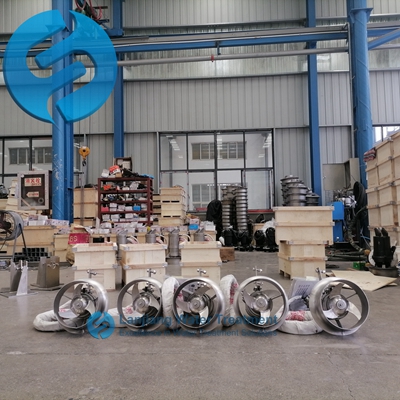Sludge treatment is an important part of the sewage treatment process, which aims to reduce sludge volume, stabilize sludge properties, and make it easy to transport and final disposal. The commonly used methods in sludge treatment mainly include the following:
First, physical methods
1. Compression and dehydration:
- Overview: Through mechanical compression and physicochemical treatment, the water in the sludge is removed to reduce its volume and facilitate transportation and disposal.
- Common techniques: belt filter dehydration, plate and frame filter dehydration, centrifugal dehydration, etc. The moisture content of dehydrated sludge can generally reach below 80%.
- Effect: significantly reduce the volume of sludge and improve the efficiency of sludge transportation and disposal.
2. Drying:
- Overview: The process of removing most of the water content from the sludge, such as through percolation or evaporation.
- Common processes: steam drying, hot air drying, the use of blast furnace heat or factory waste heat as a heat source of drying. At present, the most used sludge drying equipment includes fluidized bed drying, belt drying, paddle drying and so on.
- Effect: further reduce the moisture content of the sludge, improve the calorific value of the sludge, and facilitate subsequent incineration or the utilization of building materials.

Second, biological methods
1. Anaerobic digestion:
- Overview: Under anaerobic conditions, the process of converting organic matter in the sludge into biogas (mainly methane and carbon dioxide) through microbial action, so as to stabilize the mineralization of organic matter in the sludge.
- Advantages: Good removal rate of volatile solids, low net operating cost if biogas is utilized; Biosolids are suitable for garden or agricultural use; Pathogen activity is low.
- Disadvantages: foam, methane formation is slow; The supernatant is rich in COD, BOD, SS and ammonia. High investment; There are safety issues related to flammable gases.
2. Aerobic digestion:
- Overview: Through the role of aerobic microorganisms, the process of decomposing organic matter in sludge into stable substances such as carbon dioxide, water and ammonia nitrogen.
- Advantages: simple process operation, low engineering cost.
- Disadvantages: high energy consumption; The inactivation effect of the anaerobic process was inferior to that of the anaerobic process.
3. Aerobic compost:
- Overview: The sludge is mixed with other organic substances, composted under aerobic conditions, degraded by microorganisms, and finally made into organic fertilizer.
- Advantages: no additional heat source is required to achieve harmless; Low operating costs; Low infrastructure cost, easy to manage, simple equipment.
- Disadvantages: toxic and harmful substances and pathogenic microorganisms in sludge must be strictly controlled to meet national standards; Certain additives are required to maintain the void ratio.
Third, chemical methods
- Lime stabilization: By adding a certain proportion of quicklime to the dehydrated sludge and mixing it evenly, the quicklime reacts with the water in the dehydrated sludge to generate calcium hydroxide and calcium carbonate and release heat. Lime stabilization can play a role in sterilization, inhibition of decay, dehydration, passivation of heavy metal ions, modification, granulation and so on.
Fourth, heat treatment method
1. Incineration:
- Overview: The use of high temperature combustion technology to burn sludge into ash, in order to achieve the purpose of harmless treatment. Incineration treatment can destroy all organic matter in the sludge, kill pathogens, and minimize the sludge volume.
- Classification: direct burning and dry burning. Direct incineration means that the dehydrated sludge is directly sent to the incinerator, and fuel needs to be added to maintain combustion. Dry incineration is the drying or semi-drying of dehydrated sludge, adding auxiliary fuel when igniting, and then self-sustaining combustion.
- Advantage: The disposal is more thorough.
- Disadvantages: flue gas treatment requirements are higher, more treatment facilities; Investment and operating costs are high.
Fifth, other methods
- Sanitary landfill: the treated sludge is buried alone or mixed in the designated landfill, and the purpose of harmless treatment is achieved through natural degradation. Landfill treatment is limited by the capacity and age of the landfill.
Sixth, comprehensive treatment method
In practical applications, it is often necessary to adopt a comprehensive treatment scheme combining various treatment methods according to the nature of sludge, treatment scale, economic conditions and environmental protection requirements. For example, anaerobic digestion + aerobic composting + land use, dry incineration + building materials utilization, etc.
In summary, sludge treatment methods are varied, each has advantages and disadvantages and scope of application. When selecting the sludge treatment method, economic, environmental protection and safety factors should be considered comprehensively to ensure that the treatment effect meets the relevant standards and requirements.
Post time:2024-07-07